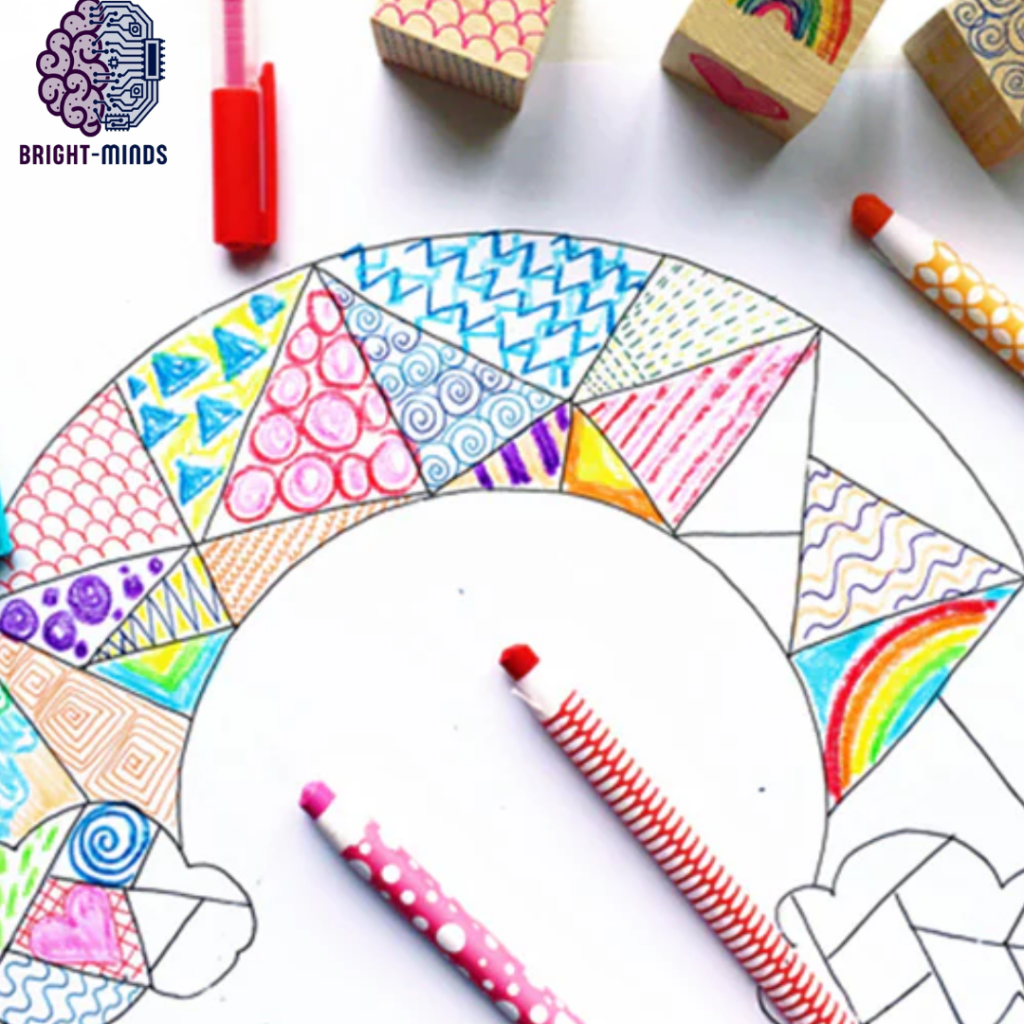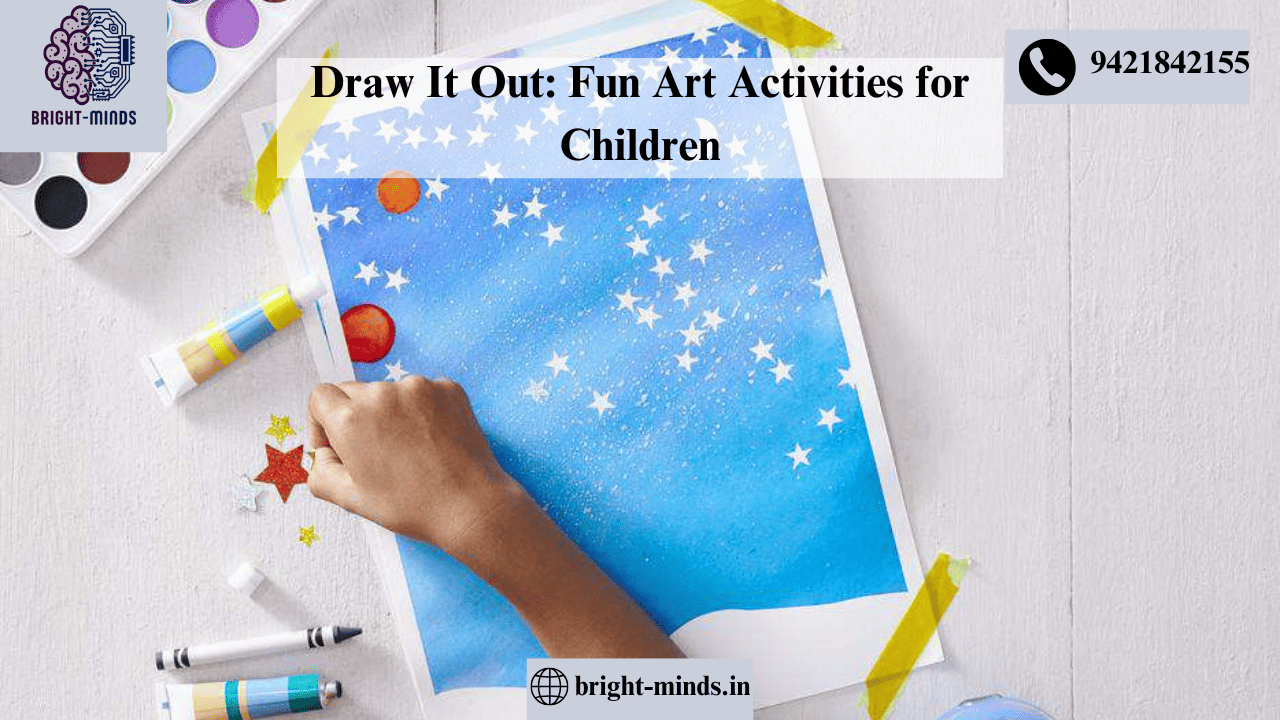Art is a wonderful medium for children to express their creativity, develop fine motor skills, and explore their imagination. Drawing, in particular, offers a unique way for children to communicate their thoughts, emotions, and observations, all while having fun. Whether at home, in school, or in a social setting, drawing activities provide children with a fulfilling outlet for their energy, creativity, and curiosity.
In this blog, we will explore various fun and engaging drawing activities that encourage kids to embrace their artistic side. These activities are designed to spark imagination, enhance creativity, and help children develop essential skills in a joyful, hands-on way.

Why Drawing is Important for Kids
Before we dive into the activities, it’s worth reflecting on the importance of drawing for children. Here are a few key benefits:
- Encourages Self-Expression: Drawing allows children to express themselves in ways that words may not fully capture. It’s an excellent tool for communication, especially when kids are just starting to explore and understand their emotions.
- Boosts Creativity and Imagination: When kids draw, they engage their imagination and start thinking outside the box. They can create new worlds, animals, or characters, which enhances their creative thinking.
- Develops Fine Motor Skills: Drawing requires the use of small hand movements and the coordination of the eyes and hands. These fine motor skills are crucial for other tasks, such as writing, buttoning shirts, or tying shoelaces.
- Improves Problem-Solving: As children draw, they make decisions about what colors, shapes, and lines to use, developing their ability to make choices and solve visual puzzles.
- Promotes Relaxation: Drawing can be a calming activity, allowing children to unwind, focus, and improve their attention span. It can even help alleviate stress or anxiety.
Fun Art Activities for Kids
Here are several exciting drawing activities that are perfect for children to enjoy while learning and growing:
1. Doodle a Day Challenge
A “Doodle a Day” challenge is an excellent way to get kids drawing every day while encouraging them to think creatively. The challenge can consist of a simple prompt each day, such as “Draw a cat wearing a hat” or “Create a dragon with wings made of leaves.” The beauty of this activity is that it gives kids a specific task while allowing them to interpret it in their own unique way.
How to Play:
- Provide a new prompt each day or let the child come up with their own.
- Set aside a dedicated time each day for doodling—this could be after school, during quiet time, or as part of a morning routine.
- Encourage the child to fill the page with doodles, no matter how simple or complex they are.
Benefits:
- Develops creative thinking and flexibility in drawing.
- Promotes daily drawing habits and self-discipline.
- Can be adapted to children’s interests, making it more enjoyable.
2. Shape-based Drawing
One of the most effective ways to help children learn to draw is by starting with simple shapes. Kids can learn that complex images often begin with basic shapes like circles, squares, and triangles. This activity teaches structure and helps children develop an understanding of how to break down complex images.
How to Play:
- Provide the child with a few simple shapes (circle, square, triangle) and ask them to combine them to form a picture. For example, a triangle can become a house, a circle can become a face, and squares can become windows.
- Gradually increase the complexity of the shapes as the child becomes more confident.
- Encourage creativity by having the child add details and colors to their creation.
Benefits:
- Strengthens understanding of basic geometric shapes and their properties.
- Encourages problem-solving and visual thinking as children combine shapes to form objects.
- Builds a strong foundation for more advanced drawing techniques later on.
3. Drawing from Nature
Drawing from nature is a fantastic way to engage children with the world around them. Whether you’re in the garden, at a park, or simply looking out the window, there’s an endless supply of inspiration in nature. This activity not only improves observational skills but also helps kids appreciate the beauty of the natural world.
How to Play:
- Take the child outside to explore the natural environment—whether it’s a garden, a park, or a hike.
- Encourage them to observe closely and draw what they see, such as leaves, flowers, trees, animals, or clouds.
- You can also bring some natural objects inside for the child to draw, like pinecones, stones, or shells.
Benefits:
- Enhances observation skills and attention to detail.
- Teaches children about the environment and nature.
- Provides an opportunity for outdoor play and exploration, while fostering creativity.
4. Story Illustration
This activity blends creativity with literacy by encouraging kids to draw illustrations for stories or books. After reading a short story or making up their own, children can illustrate scenes, characters, or important objects from the story.
How to Play:
- Read a story aloud to the child, whether it’s a favorite book or an original tale.
- Discuss the story and ask the child to pick a scene, character, or moment they would like to illustrate.
- Provide drawing materials and encourage the child to illustrate the chosen part of the story. They can add their own creative twists to the artwork, expanding on the narrative.
Benefits:
- Enhances comprehension and creativity by connecting art with storytelling.
- Encourages kids to think critically about the story and select meaningful moments to illustrate.
- Fosters literacy skills through the combination of reading and drawing.
5. Color Mixing and Pattern Play
Exploring color combinations and patterns is a fun and educational drawing activity that helps children understand color theory and develop their artistic eye. It also encourages children to experiment with different textures and designs.
How to Play:
- Provide the child with a selection of colored markers, crayons, or paints.
- Encourage them to experiment with mixing colors (if using paints) or create different patterns (stripes, polka dots, zigzags, etc.).
- Kids can then use these colors and patterns to decorate a scene, an object, or even create an abstract design.
Benefits:
- Teaches color theory and the effect of mixing colors.
- Encourages exploration of patterns and textures, which are essential for visual composition.
- Promotes fine motor skills and concentration as children work on their designs.
6. Animal Creations
Children love animals, and this activity encourages them to combine their love of creatures with their drawing skills. By imagining and drawing different animals—whether real or imagined—kids can develop creativity and fine-tune their drawing skills.
How to Play:
- Provide the child with a prompt, such as “Draw a pet dragon” or “Create an underwater creature.”
- Encourage the child to think about the physical characteristics of the animal, such as its shape, size, texture, and features (like wings, fins, or horns).
- You can ask the child to label parts of their animal, such as its eyes, nose, and tail.
Benefits:
- Sparks the imagination by combining the child’s creativity with the natural world.
- Helps children learn about different animals and their characteristics.
- Improves observation skills as children focus on the specific traits of animals.
7. Collaborative Drawing
Drawing doesn’t always have to be a solo activity. Collaborative drawing is a great way to encourage teamwork and creativity while having fun with others. It can be done with siblings, friends, or even with the entire family.
How to Play:
- Start with a blank sheet of paper. Each person takes turns adding to the drawing.
- For example, one child might draw the sun, while another draws a tree, and another draws a person.
- The idea is to build the picture together, adding elements and details one at a time.
- You can also do this digitally using collaborative art tools if you prefer a screen-based activity.
Benefits:
- Encourages teamwork and cooperation as everyone works together toward the same goal.
- Sparks creativity by blending different drawing styles and ideas.
- Teaches children the importance of sharing and collaborating.
8. Drawing with Music
This activity combines the power of music with visual creativity. It’s a great way to show kids how different sounds and moods can inspire different styles of drawing.
How to Play:
- Play different genres of music (classical, rock, jazz, etc.) and ask the child to draw what the music makes them feel or imagine.
- Encourage them to use different lines, shapes, and colors depending on the mood of the music.
- You can also guide them to listen to specific parts of the music—such as fast beats or slow melodies—and draw corresponding movements or patterns.
Benefits:
- Develops an understanding of how music and art are interconnected.
- Encourages emotional expression through both sound and visuals.
- Promotes creativity by combining two art forms in one activity.
Conclusion
Drawing activities are a fantastic way to nurture creativity, problem-solving, and fine motor skills in children. By incorporating fun, engaging, and educational drawing activities into your child’s routine, you can help them explore the world through their imagination and creativity. Whether through doodling, color exploration, or nature-inspired drawings, each activity provides an opportunity for children to learn, grow, and express themselves artistically. So, grab some paper, markers, and a lot of imagination—let’s draw it out!
Also Read:
https://bright-minds.in/unlocking-word-meaning-for-class-ukg-english-to-hindi/

